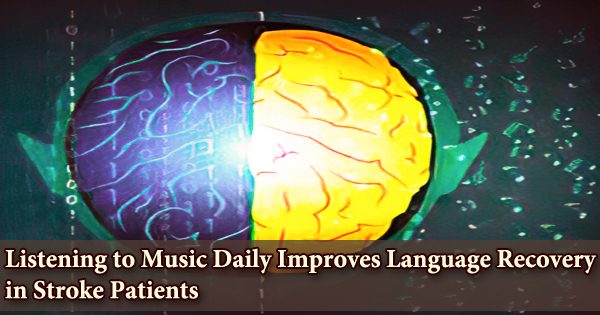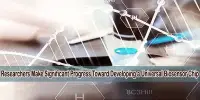When compared to those who listened to audiobooks, stroke survivors who listened to vocal music exhibited better recovery of structural connectivity of language networks in the left frontal lobe. Researchers wanted to see if vocal music would be more successful than instrumental music or speech for promoting cognitive and linguistic recovery and neuroplasticity after stroke, based on neuroimaging data showing vocal music involves broad and bidirectional networks in the brain. According to studies, listening to music on a regular basis helps people recover their language after a stroke. The brain processes that underpin the phenomena, however, are yet unclear.
The effect of listening to vocal music, instrumental music, and audiobooks on the structural and functional recovery of the language network in patients who had had an acute stroke was compared in research done at the University of Helsinki and the Turku University Hospital Neuro center. During a three-month follow-up phase, the researchers looked at the links between such changes and language recovery. The research was published in the journal eNeuro.
Vocal music improved verbal memory recovery more than instrumental music or audiobooks, as well as language recovery, notably in aphasic patients. Voxel-based morphometry and resting-state and task-based fMRI findings revealed that vocal music listening enhanced gray matter volume and functional connectivity in the default mode network in a selective manner in the left temporal regions.
Listening to vocal music increased the structural connectivity of the language network in the left frontal lobe when compared to listening to audiobooks, according to the research. The rehabilitation of linguistic abilities was linked to these structural alterations.
“For the first time, we were able to demonstrate that the positive effects of vocal music are related to the structural and functional plasticity of the language network. This expands our understanding of the mechanisms of action of music-based neurological rehabilitation methods,” says Postdoctoral Researcher Aleksi Sihvonen.
Listening to vocal music is an effective and simple strategy for supporting cognitive recovery after a stroke and enhancing early language recovery in aphasia. Both structural and functional plasticity changes in temporoparietal networks, which are important for emotional processing, language, and memory, drive the therapeutic benefits of vocal music. Aphasia, a linguistic disability caused by a stroke, causes patients and their families a great deal of pain. Current therapies aid in the rehabilitation of language deficits, but the outcomes vary, and the essential rehabilitation is frequently unavailable in a timely and sufficient manner.
“Listening to vocal music can be considered a measure that enhances conventional forms of rehabilitation in healthcare. Such activity can be easily, safely, and efficiently arranged even in the early stages of rehabilitation,” Sihvonen says.
Listening to music, according to Sihvonen, might be utilized as a cost-effective supplement to traditional rehabilitation or for rehabilitating individuals with moderate speech impairments when other alternatives are limited. Music has gained popularity as a neurorehabilitation aid in the recent decade, particularly for stroke patients. This has been fueled by the rapidly rising prevalence of stroke and its massive socioeconomic burden, as well as advances in music neuroscience, which have revealed the widespread cortical and subcortical networks underlying auditory, motor, cognitive, and emotional processing of music, as well as their malleability through musical training.
Music may be seen as a type of environmental enrichment (EE) in the rehabilitation setting since it enhances activity-dependent neuroplasticity in the large-scale brain network it activates. The brain requires stimulation to heal as quickly as possible after a disruption in the cerebral circulation. This is also the objective of traditional rehabilitative techniques. In left hemisphere lesioned patients, music listening improved verbal memory and attention decreased negative mood, and increased gray matter volume (GMV) in spared prefrontal and limbic regions.
Music’s vocal (sung) component might be a major aspect in its therapeutic effectiveness. Singing is one of the first forms of human communication, and it is thought to be a forerunner to the development of language. In addition to the perceptual, cognitive, and emotional processing involved with instrumental music, songs serve as an essential bridge between speech and music, tying words and melody into a coherent representation and engaging linguistic and vocal motor brain processes. In the field of aphasia therapy, vocal music is particularly intriguing.
“Unfortunately, a lot of the time spent in hospital is not stimulating. At these times, listening to music could serve as an additional and sensible rehabilitation measure that can have a positive effect on recovery, improving the prognosis,” Sihvonen adds.
Melodic intonation therapy (MIT), a singing-based speech training intervention, has been proven to be helpful in improving the generation of taught speech content and the recovery of verbal communication in aphasia, especially when administered at the subacute post-stroke stage. It is presently uncertain if regular listening to vocal music has long-term beneficial benefits on early language recovery in aphasia.
















